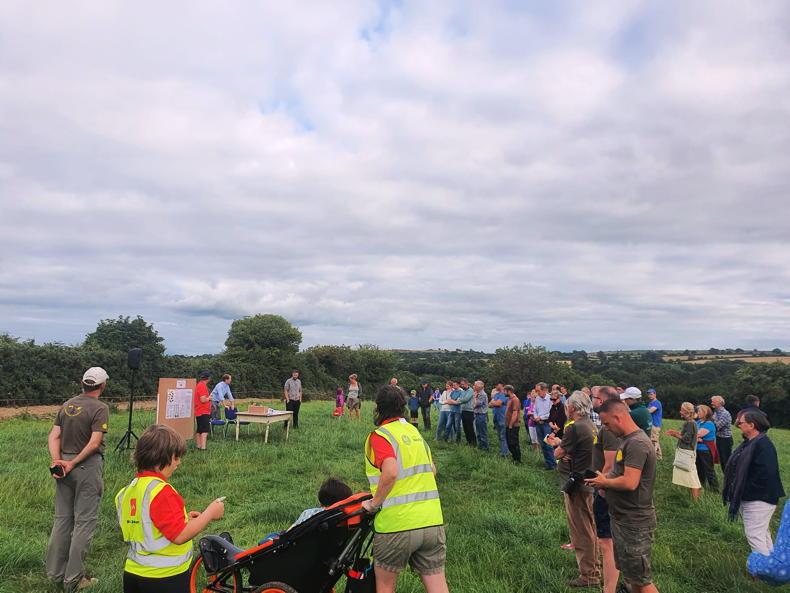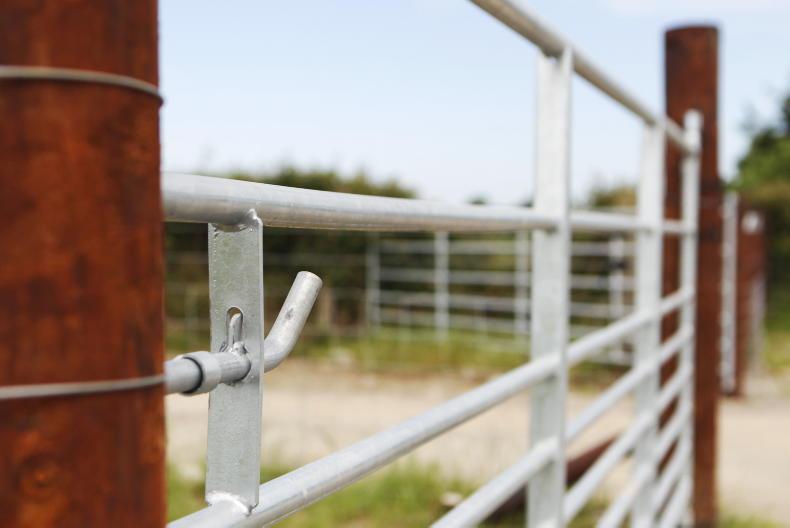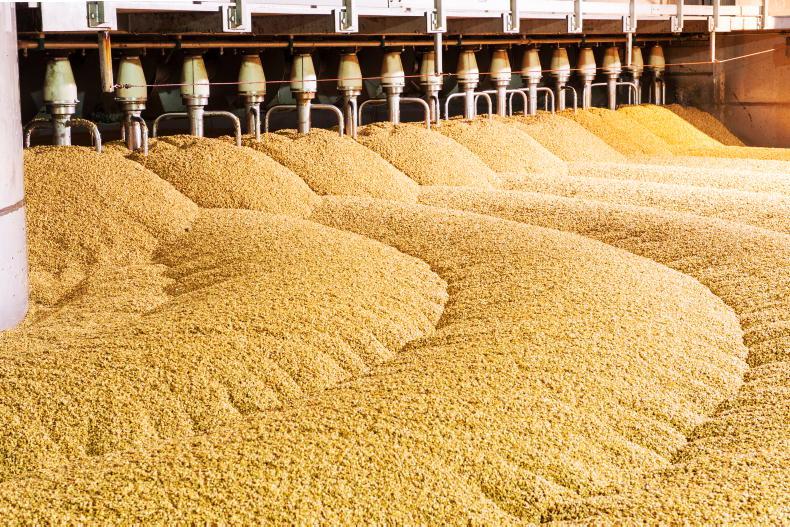It’s hard to escape the sense that farming is on the brink of massive change. Change in the policy direction means change in the day-to-day experience of farmers.
Farmers are fearful for the future of their own small family businesses. And reassurance that change won’t render their own farm obsolete only provides partial reassurance.
Many parts of the country have seen the pub close down, the country shop boarded up, the nearby town hollowed out with as many empty buildings as open shops.
If you’re my age, a student of history or even an avid watcher of Reeling in The Years, the experience of miners in the UK must resonate. Battling against the tide of events, fighting to retain their livelihoods, they lost.
Promises
And most of the promises of new investment never came to fruition. Young people left these parts of Wales, the west Midlands, Yorkshire and the north of England, and across southern Scotland. They left just as young people left huge tracts of rural Ireland in the 1840s, the 1930s, 1950s, 1980s and the 2010s.
The longer the negotiations drag on, the more the fear will grow
The debate around sectoral cuts has fed this fear. The longer the negotiations drag on, the more the fear will grow.
And watching the explosion of anger across Europe only hardens the emotional response into something more negative. Especially as the protests began in the Netherlands as a response to the programme prescribed to deal with the challenge of reducing the environmental footprint of food production.
You expect to see French farmers out demonstrating, blocking roads. You don’t expect to see the Dutch - so analytical, so resourceful, determined and progressive - facing escalating protests from their farmers that divide public opinion. Flags are being hung upside-down by householders as an expression of support for farmers.
Do I think that Irish farmers will rise up in the way the Dutch farmers did? I don’t actually know. I do see every layer of Irish farming sharing videos, photographs, articles and social media postings of the European protests.
It’s only three years since cattle farmers, initially led by Beef Plan, blockaded meat factories, leading to injunctions and High Court appearances.
The Beef Forum was formed as part of the Government response to those protests. Has that forum achieved much since? Most farmers seem to think it was little more than a talking shop and that the factories have returned to business as usual.
Hope needed
What farmers need is certainty and hope. Certainty that their sector is going to evolve, not dissolve. Hope that new income pathways will emerge as traditional expansion is curtailed for a decade by carbon quotas of one form or another.
And hope that food production, done well, is seen by society as an important and worthwhile vocation.
Last Wednesday evening, I attended a farm walk near home. The farm is a dairy farm, run by Alan and Cheryl Poole. And the nature of the evening was about nature - about how this commercially successful dairy farm was interacting with the wider natural world.

Samuel Sheane, Togher, Kilbride, Co Wicklow, with Gizmo the barn owl at Alan and Cheryl Poole's biodiversity farm walk in Craanford, Gorey, Co Wexford.
Birds and bats are encouraged on to the farm. A survey found 14 of Ireland's 23 bumblebee species among the hedges and flowers around the farm.
A sample of the insects living in the Bann River that runs through the farm indicated the water was "pristine". I saw my first stonefly, an indicator of the water's rude health.
It was entitled a biodiversity farm walk and provided hope and certainty to all who attended.
Hope that we can farm commercially while co-existing with flora, fauna, insects, birds and bats, and aquatic life - certainty that there are sustainable pathways within reach for most Irish farms to fulfil these two goals.
End to livestock farming
Some would hold that the goals are conflicting. George Monbiot, the British environmental journalist and broadcaster, said on Primetime on Tuesday evening that the natural world can only survive if we end livestock farming.
Meat, milk and eggs are a luxury the planet can no longer afford, he said. The credibility his perspective draws on is that all the warnings from himself and other environmental campaigners, which fell largely on deaf ears, are now being realised.
However, there is a huge difference in being correct in the diagnosis of a problem and in being correct in proscribing the best solution. We don't have to look too far for examples of this.
Miscalculations
AIB is correct in saying it needs to run a profitable business. However, the solution it announced this week, to close down handling cash in 70 branches, was a disastrous miscalculation. It had the wit to quickly backtrack.
The hope is that this is because it has suddenly realised that you can't hope to maintain a broad base of banking customers, particularly personal and small business customers, if you remove day-to-day banking services from their reach.
The British government and the DUP agree that the protocol negotiated and signed as part of a legal international treaty three years ago needs adjustment. The solution proposed, the unilateral breach of that agreement, seems a serious misstep.
There is no doubt that farming must play its part in halving national emissions of greenhouse gases by 2030.
We must also understand that the sectoral target, be it 22%, 26%, or 30%, is only a stepping stone on the way to carbon neutrality. That ultimate goal, which we must reach by 2050, will be a much harder reach.
However, my gut tells me that the solution to our problems doesn't simply lie in a chemical lab producing synthetic proteins.
What I saw on Alan Poole's farm seems like a pathway any Irish farm can follow. Oisin Coghlan, director of Friends of The Earth, said this week that the national herd need only return to its 2014 level for us to hit the upper 30% target.
That might be an unpalatable message to many farmers, but it isn't an unreachable goal.
Urgency
There is an urgent need to move past the discussions around a number for sectoral reductions. We need to get on with the job of enacting a rational and comprehensive plan to meeting that target.
Imagine if Padraig Joyce or Jack O'Connor rocked into the Galway or Kerry dressing room on Thursday night to tell their panel the target for Sunday's All-Ireland football final was to score 2-20.
"Great," David Clifford or Damien Comer might reply, "and how are we to notch up that score. What's the plan?"
There would be no point in the manager saying it was up to every player to play their part and that everyone would have to accept pain for the target to be reached, but that they were confident the target was reachable with buy-in.
For that is not a plan. It's a target without a plan.
Farming needs a plan for whatever target we end up with. And we need it immediately.
It’s hard to escape the sense that farming is on the brink of massive change. Change in the policy direction means change in the day-to-day experience of farmers.
Farmers are fearful for the future of their own small family businesses. And reassurance that change won’t render their own farm obsolete only provides partial reassurance.
Many parts of the country have seen the pub close down, the country shop boarded up, the nearby town hollowed out with as many empty buildings as open shops.
If you’re my age, a student of history or even an avid watcher of Reeling in The Years, the experience of miners in the UK must resonate. Battling against the tide of events, fighting to retain their livelihoods, they lost.
Promises
And most of the promises of new investment never came to fruition. Young people left these parts of Wales, the west Midlands, Yorkshire and the north of England, and across southern Scotland. They left just as young people left huge tracts of rural Ireland in the 1840s, the 1930s, 1950s, 1980s and the 2010s.
The longer the negotiations drag on, the more the fear will grow
The debate around sectoral cuts has fed this fear. The longer the negotiations drag on, the more the fear will grow.
And watching the explosion of anger across Europe only hardens the emotional response into something more negative. Especially as the protests began in the Netherlands as a response to the programme prescribed to deal with the challenge of reducing the environmental footprint of food production.
You expect to see French farmers out demonstrating, blocking roads. You don’t expect to see the Dutch - so analytical, so resourceful, determined and progressive - facing escalating protests from their farmers that divide public opinion. Flags are being hung upside-down by householders as an expression of support for farmers.
Do I think that Irish farmers will rise up in the way the Dutch farmers did? I don’t actually know. I do see every layer of Irish farming sharing videos, photographs, articles and social media postings of the European protests.
It’s only three years since cattle farmers, initially led by Beef Plan, blockaded meat factories, leading to injunctions and High Court appearances.
The Beef Forum was formed as part of the Government response to those protests. Has that forum achieved much since? Most farmers seem to think it was little more than a talking shop and that the factories have returned to business as usual.
Hope needed
What farmers need is certainty and hope. Certainty that their sector is going to evolve, not dissolve. Hope that new income pathways will emerge as traditional expansion is curtailed for a decade by carbon quotas of one form or another.
And hope that food production, done well, is seen by society as an important and worthwhile vocation.
Last Wednesday evening, I attended a farm walk near home. The farm is a dairy farm, run by Alan and Cheryl Poole. And the nature of the evening was about nature - about how this commercially successful dairy farm was interacting with the wider natural world.

Samuel Sheane, Togher, Kilbride, Co Wicklow, with Gizmo the barn owl at Alan and Cheryl Poole's biodiversity farm walk in Craanford, Gorey, Co Wexford.
Birds and bats are encouraged on to the farm. A survey found 14 of Ireland's 23 bumblebee species among the hedges and flowers around the farm.
A sample of the insects living in the Bann River that runs through the farm indicated the water was "pristine". I saw my first stonefly, an indicator of the water's rude health.
It was entitled a biodiversity farm walk and provided hope and certainty to all who attended.
Hope that we can farm commercially while co-existing with flora, fauna, insects, birds and bats, and aquatic life - certainty that there are sustainable pathways within reach for most Irish farms to fulfil these two goals.
End to livestock farming
Some would hold that the goals are conflicting. George Monbiot, the British environmental journalist and broadcaster, said on Primetime on Tuesday evening that the natural world can only survive if we end livestock farming.
Meat, milk and eggs are a luxury the planet can no longer afford, he said. The credibility his perspective draws on is that all the warnings from himself and other environmental campaigners, which fell largely on deaf ears, are now being realised.
However, there is a huge difference in being correct in the diagnosis of a problem and in being correct in proscribing the best solution. We don't have to look too far for examples of this.
Miscalculations
AIB is correct in saying it needs to run a profitable business. However, the solution it announced this week, to close down handling cash in 70 branches, was a disastrous miscalculation. It had the wit to quickly backtrack.
The hope is that this is because it has suddenly realised that you can't hope to maintain a broad base of banking customers, particularly personal and small business customers, if you remove day-to-day banking services from their reach.
The British government and the DUP agree that the protocol negotiated and signed as part of a legal international treaty three years ago needs adjustment. The solution proposed, the unilateral breach of that agreement, seems a serious misstep.
There is no doubt that farming must play its part in halving national emissions of greenhouse gases by 2030.
We must also understand that the sectoral target, be it 22%, 26%, or 30%, is only a stepping stone on the way to carbon neutrality. That ultimate goal, which we must reach by 2050, will be a much harder reach.
However, my gut tells me that the solution to our problems doesn't simply lie in a chemical lab producing synthetic proteins.
What I saw on Alan Poole's farm seems like a pathway any Irish farm can follow. Oisin Coghlan, director of Friends of The Earth, said this week that the national herd need only return to its 2014 level for us to hit the upper 30% target.
That might be an unpalatable message to many farmers, but it isn't an unreachable goal.
Urgency
There is an urgent need to move past the discussions around a number for sectoral reductions. We need to get on with the job of enacting a rational and comprehensive plan to meeting that target.
Imagine if Padraig Joyce or Jack O'Connor rocked into the Galway or Kerry dressing room on Thursday night to tell their panel the target for Sunday's All-Ireland football final was to score 2-20.
"Great," David Clifford or Damien Comer might reply, "and how are we to notch up that score. What's the plan?"
There would be no point in the manager saying it was up to every player to play their part and that everyone would have to accept pain for the target to be reached, but that they were confident the target was reachable with buy-in.
For that is not a plan. It's a target without a plan.
Farming needs a plan for whatever target we end up with. And we need it immediately.










SHARING OPTIONS